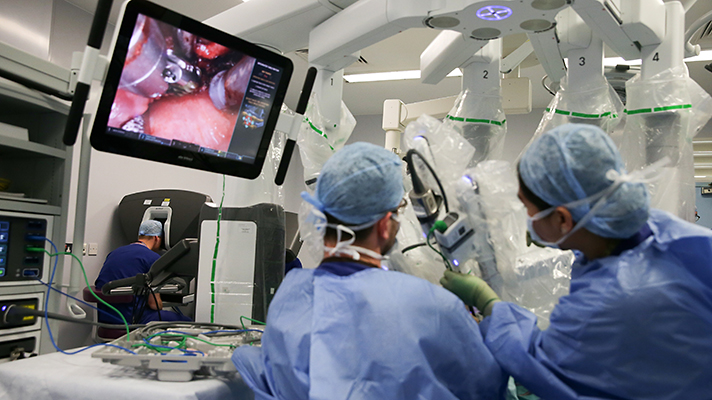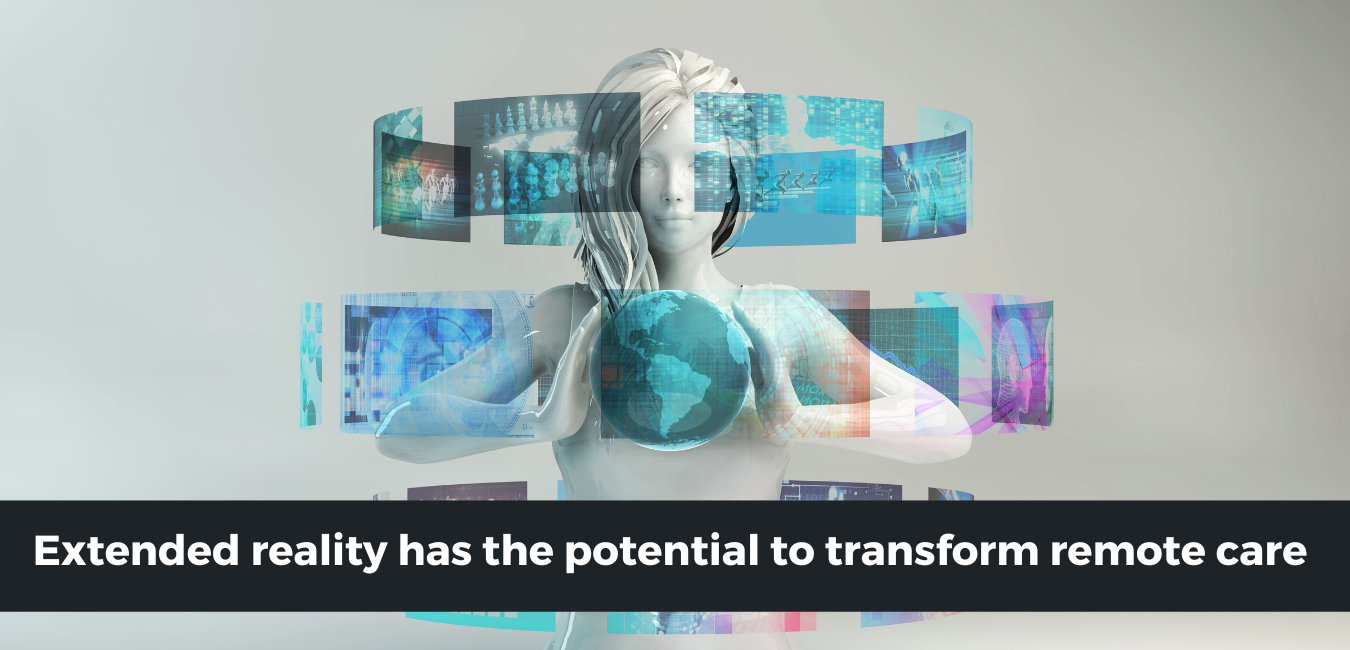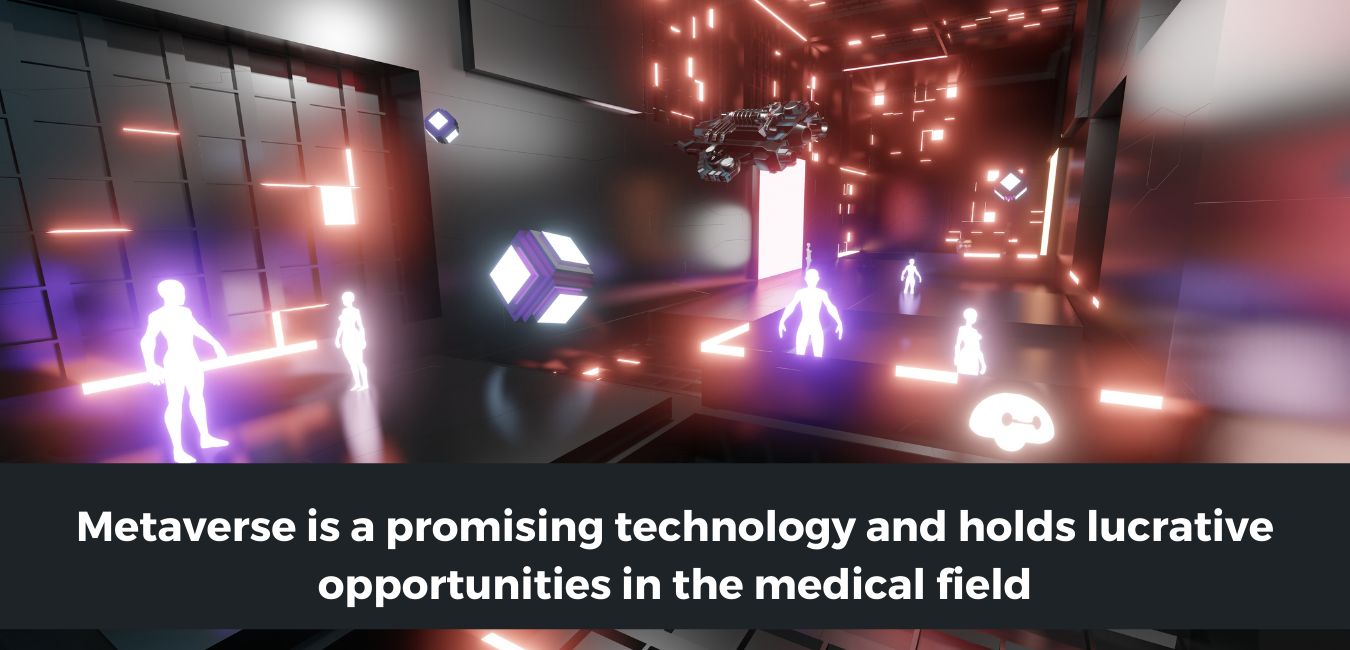How Augmented Reality and Virtual Reality is Transforming the Healthcare Industry?

As the pandemic spreads, some healthcare providers turn to virtual and augment reality tools to communicate with patients and provide more personalized treatment, especially in situations where physical interaction is minimal.
VR can replicate a completely interactive environment, while AR can integrate sensory elements into a real-world setting (think Pokemon Go).
AR in the medical sector
Healthcare professionals have quickly recognized the advantages of AR technology. In the healthcare sector, augmented reality has a precise application in education. Healthcare professionals must understand a great deal about anatomy and how the human body works. Learners can visualize and communicate with three-dimensional models of bodies using augmented reality applications.
However, virtual reality benefits more than just healthcare employees. It's also proving to be a valuable tool for patient education, enabling medical practitioners to explain surgical procedures and how medications function to patients.
Currently, surgeons use a variety of methods to visualize the region in which they will operate. Still, virtual reality, which can project three-dimensional images of the patient's anatomy onto the surgeon's field of view, is expected to increase precision and patient results.
Vein visualization is an example of an augmented reality technology that is currently in use. Many people dislike being injected or getting blood drawn; the feeling is made much worse when finding a vein is complex, and the patient has to be "stuck" several times.
Key Highlights of AR in Healthcare
- Today augmented reality is used in hospitals worldwide to provide vein visualization, surgical visualization, and education.
- Recent hardware and software advancements have greatly improved the consumer and developer experience while lowering the cost of augmented reality.
- Forward-thinking healthcare providers are investigating AR’s future benefits to consumers and businesses.
- We're still in the early stages of AR in healthcare, but significant advancements in medical and healthcare professional knowledge, communication, and patient outcomes are on the way.
How AR and VR are boons for the Healthcare Industry?
Augmented reality can save lives by displaying nearby defibrillators.
What would you do if the person next to you suddenly passed out? All sorts of thoughts would race through your mind, and you would instinctively reach for your phone, whether to call an ambulance, a doctor or your mother for assistance. You can project the exact location of the nearest AEDs on the screen of your phone using the Layar browser, and it will only take a minute to locate them and assist those in need. As a result, augmented reality provides critical knowledge to those in need or threat.
Google Glass could assist new mothers who are having difficulty breastfeeding.
Although Google Glass was unable to conquer the globe, it successfully assisted new mothers with breastfeeding. Small World, a Melbourne-based innovation firm, collaborated with the Australian Breastfeeding Association on a Google Glass trial that essentially allowed their phone counselors to see through the eyes of mothers as they breastfed at home. Struggling mothers could get expert support at any time of day in this manner, and they didn't even have to put their babies down. Consultations are elevated to a new level when the patient's experience is shared.
Patients can better explain their symptoms using virtual reality.
When it comes to correctly describe their symptoms to their physicians, patients sometimes fail. In other situations, people can overreact to a medical condition or, on the contrary, minimize the issue. Augmented truth in ophthalmology may be the solution to patient education.
EyeDecide is a one-of-a-kind diagnostic software that simulates the effect of various conditions on a person's vision using the camera display. Doctors can affect the vision of a patient suffering from a particular disorder using software like EyeDecide.
Nurses can use VR to locate veins more easily.
AccuVein, a start-up company, uses augmented reality technology to make the lives of nurses and patients simpler. According to Vinny Luciano, a marketing specialist at AccuVein, 40% of IVs (intravenous injections) miss the vein on the first try, with the figures increasing for children and the elderly.
AccuVein uses virtual reality to display nurses and doctors where veins are in patients' bodies using a handheld scanner that projections over the skin. According to Luciano, it’s been used on over 10 million patients, and it makes locating a vein on the first stick 3.5 times more likely. Healthcare practitioners could benefit from such advances, which could help them expand their knowledge and skills.
Pharma firms will provide more cutting-edge drug information
Have you ever wondered how a drug interacts with your body? Even if you were interested in learning more about how pills and medications work, I'm sure you lost interest after reading the dull and incomprehensible drug definition.
Instead of reading lengthy explanations on the bottle, patients can use AR to see how the medication functions in 3D right in front of their eyes. Using virtual reality technology, lab staff could keep track of their experiments. Team in pharmaceutical plants might begin working without any hands-on training because the device would instruct them on what to do and how to do it.
Market Scenario of AR and VR in Healthcare
With their use in surgeons’ immersive training for complex procedures, 3D operating room simulations, phobia buster in mental health treatment, and chronic pain management, these innovations have revolutionized the healthcare industry. VR has also played a key role in EMDR (Eye Movement Desensitization and Reprocessing) therapy, which uses specific eye movements to reframe traumatic memories. Furthermore, this technology has applications in various care management fields, including autism and depression treatment, cancer therapy, and assisted living. Virtual reality-based organ models have helped surgeons prepare for delicate and complex procedures that require greater precision, fewer complications, and minor trauma.
- The demand is also expected to grow as a result of increased private funding and investment. With increased funding in these developments, the industry sees a significant increase in the number of investors.
- MindMaze, a Swiss start-up, has raised USD 100 million from Hinduja Group, a global corporation, to develop virtual reality hardware and software aimed at healthcare. LENSAR, Inc. Aisling Capital, Florida Growth Fund Flo Capital among the investors who contributed about USD 75.1 million to the venture.
In 2020, North America held a significant share in revenue in the global augmented reality healthcare market.
The presence of significant market players in the North America region and their ongoing efforts to innovate and provide better solutions boost the market growth. The region's major developed economies, such as the United States and Canada, are increasing regional market value.
The region's market value is being boosted by the well-established healthcare sector and advanced and newer AR technologies. The involvement of numerous market players and extensive R&D activities in the area also contribute to its large share. Due to higher acceptance levels, high healthcare expenditures, and increasing government initiatives and investment, the United States is the region's largest market.
Furthermore, the Asia Pacific region and its significant economies, such as Japan, China, and India, are expected to develop at the fastest rate between 2021 and 2028. The rapid development of the healthcare sector is the primary driver of regional market expansion. The regional market value is being bolstered by global players' increasing interest in investing and expanding into the region's emerging economies to take advantage of available opportunities. The rising prevalence of chronic diseases and the rapidly growing population are driving up regional market value.
AccuVein Inc., Alphabet Inc. (Google), Atheer, Inc., Augmedix, Blippar, CAE Healthcare, DAQRI, EchoPixel, Koninklijke Philips N.V., Magic Leap, Inc., Microsoft Corporation, Orca Health, Inc., Osterhout Design Group (ODG), Siemens Healthineers, Sony Corporation, Virtually Better Inc., among others are some of the most prominent competitors. Companies involved in the augmented reality in the healthcare sector have announced mergers and acquisitions, alliances and agreements, and new product creation to strengthen their positions in the industry. To gain a competitive edge, major players are expanding into new regions with their advanced technologies.
2021: An year of lucrative growth for AR and VR in the Healthcare industry
VR is expected to rise at a 30.3% compound annual growth rate (CAGR) in the coming years. One of the significant benefits of integrating this technology in healthcare is virtual training and education. Furthermore, virtual reality in pain therapy sessions, telesurgery, anatomy simulation, 3D-Stereovision, and exposure therapy are gaining traction and are expected to drive segment development. Furthermore, the use of virtual reality in diagnostics is both easy and time-saving, which is expected to accelerate the technology's widespread adoption. Virtual reality has applications in gaming, diagnostics, exposure therapy, recovery, and pain distraction, to name a few. In the application category, VR-based simulation had the highest revenue share in 2016. Virtual reality simulation is gaining popularity in medical education because it offers more hands-on experience. Many medical schools and universities all over the world are taking advantage of this opportunity.
AR has a wide range of uses and has impacted the healthcare sector significantly. It assists in surgeries, medical training and education, patient care and management, and medical imaging with head-mounted screens. Furthermore, this technology is essential for fitness management. Various AR-based health and fitness applications are changing the way people exercise. Users should not lose touch with the natural world by using AR, and the information is delivered to the eyesight as quickly as possible. AR is predicted to become a driving force in the future of medicine as a result of this. AR may be used in various settings, including surgeries, recovery, training, and medical education. The increased use of this technology in surgeries is due to an increase in the number of diseases and technical advances in healthcare IT. AR employs various tools, including sensors, simulators, and transparent screens, to enhance patient-surgeon coordination and improve surgical procedures.
Conclusion: A headstart towards a digital world
Indeed, the medical and healthcare industries will be among the first to adopt augmented reality in a significant way. Many nurses and doctors now use augmented reality apps daily to enhance patient education and outcomes.
Many businesses are now working to lay the groundwork for the AR movement. Microsoft's Hololens, for example, is incredibly impressive and has a wide range of applications in business and healthcare. With the correct steps, AR and VR might pave the way for healthcare in the long run.










